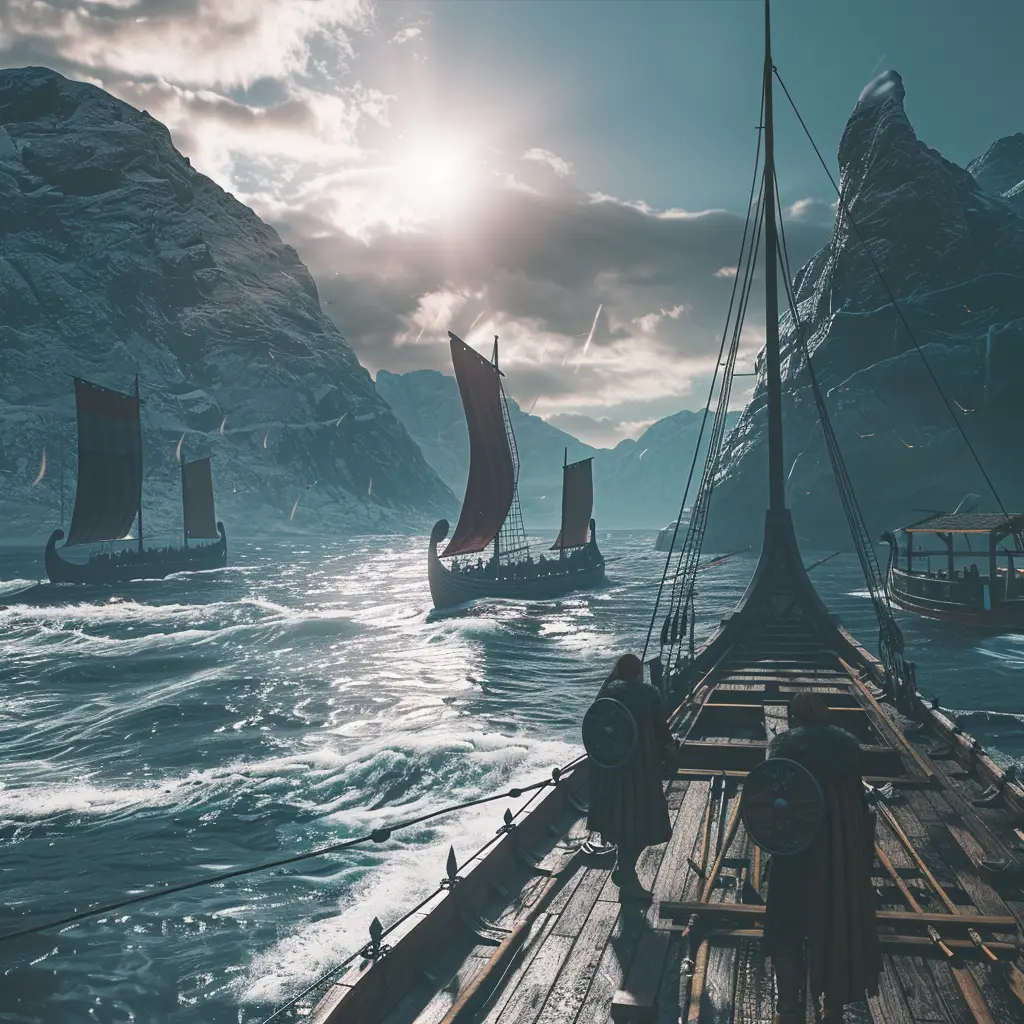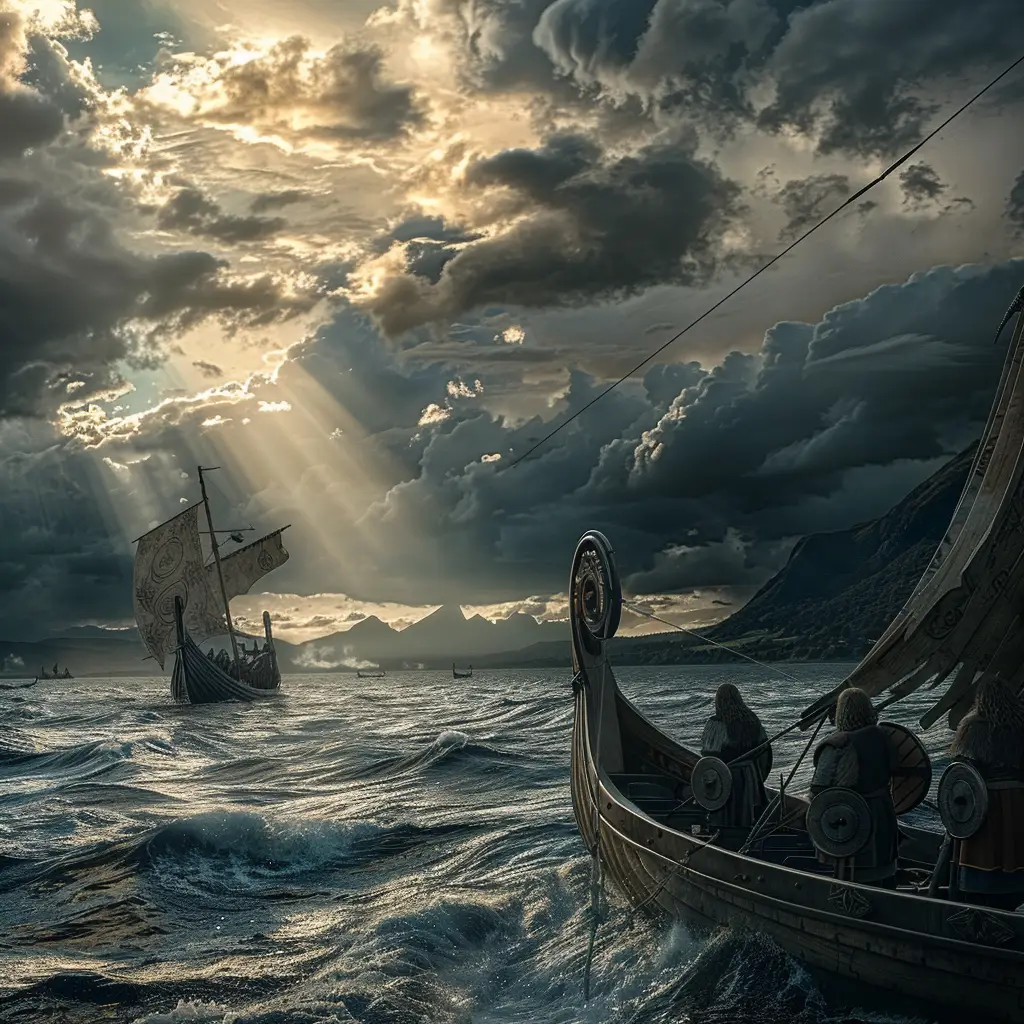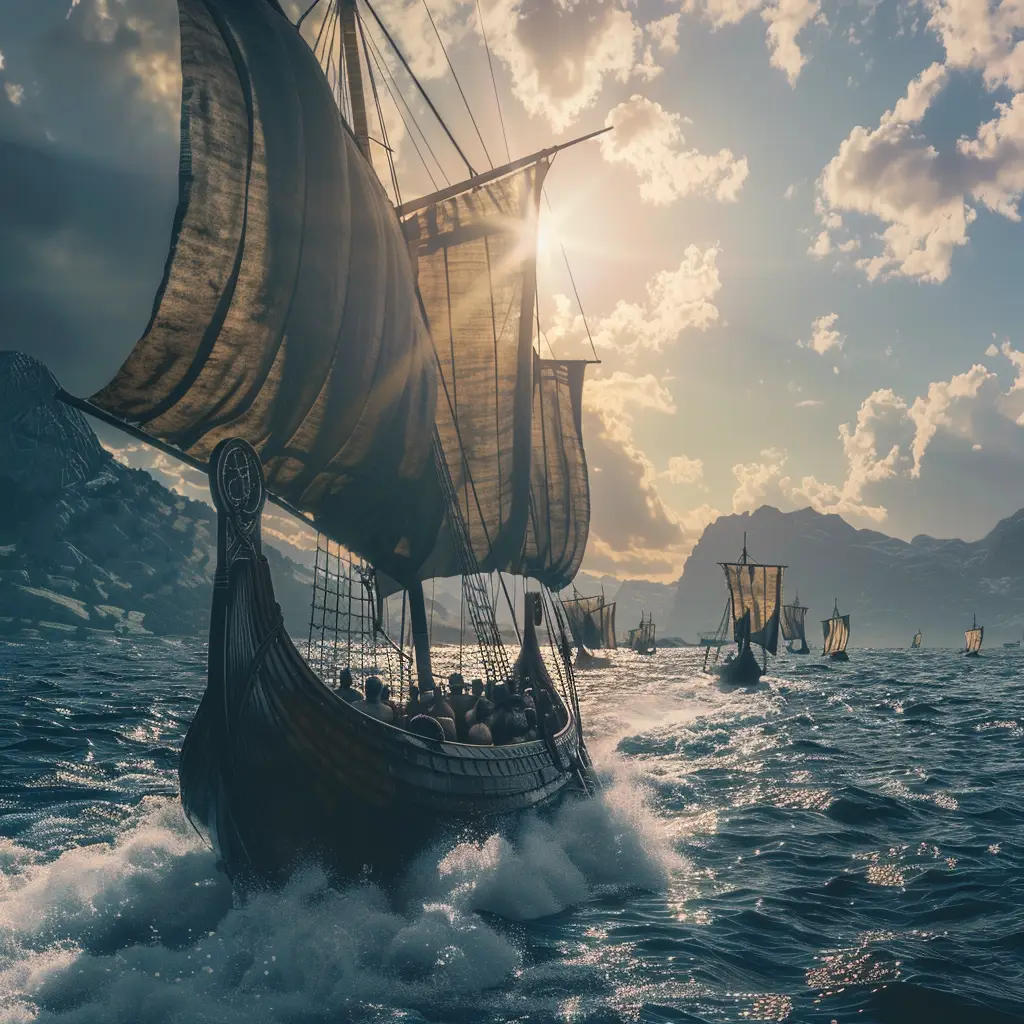Viking exploration, spanning from roughly the 8th to the 11th centuries, was an extraordinary feat of navigation, trade, and settlement that saw the Norse expand far beyond their Scandinavian homelands.
Known for their innovative shipbuilding skills and seafaring expertise, Vikings explored territories across Europe, the North Atlantic, and even as far as North America. Their reach extended from the British Isles and Iceland to Russia and the Mediterranean, influencing cultures, trade routes, and political dynamics throughout the regions they encountered.
Key Phases and Routes of Viking Exploration
Westward Exploration: The British Isles, Ireland, and France:
The Vikings began by raiding monasteries along the British Isles, famously attacking Lindisfarne in 793 CE. From there, they expanded into Ireland and Scotland, eventually establishing settlements and trading towns, such as Dublin.
Vikings also targeted France, sailing up rivers like the Seine, where they sacked Paris in 845 CE. Viking raids led to the Treaty of Saint-Clair-sur-Epte, which established Normandy, named for the “Northmen” or Norse settlers, under the leadership of Viking leader Rollo.
North Atlantic Expeditions: Iceland, Greenland, and Vinland:
In the late 9th century, Norse settlers, driven by overpopulation or adventure, discovered Iceland and established a thriving settlement. Iceland became a hub for Norse culture, literature, and governance, notably establishing the Althing, one of the earliest known parliamentary assemblies.
From Iceland, the Viking explorer Erik the Red set out to settle Greenland around 985 CE. His son, Leif Erikson, later ventured further west and is credited with discovering Vinland (likely in Newfoundland, Canada) around 1000 CE, marking the Vikings as the first Europeans to reach North America.
Eastward Expansion: Russia and the Byzantine Empire:
Viking explorers, known as Varangians in Eastern Europe, travelled along the rivers of modern-day Russia, Belarus, and Ukraine, eventually establishing trade routes to the Byzantine Empire and the Middle East.
Norsemen, including leaders like Rurik, founded the Kievan Rus’ around the 9th century, a federation that became the foundation of modern Russian and Ukrainian states.
Vikings also became prominent in Constantinople, where many served in the Varangian Guard, an elite military unit that protected the Byzantine Emperor.
Southern Exploration: The Mediterranean and North Africa:
Viking expeditions reached into the Mediterranean, where they raided parts of Italy and Sicily and even travelled to North Africa.
Viking explorers engaged in trade, and raiding, and sought mercenary work with rulers in regions as far-flung as the Abbasid Caliphate. Artifacts and coins from Islamic lands found in Scandinavia testify to their wide-ranging trade connections.
Viking Exploration Tactics and Navigation:
Viking navigation was advanced for the time, relying on sun compasses, landmarks, and possibly sunstones to navigate across open seas. Their longships, built with shallow drafts and flexible structures, allowed them to travel up rivers and across oceans, carrying them deep into foreign lands or along coastlines inaccessible to larger ships.
Legacy of Viking Exploration:
Viking exploration reshaped the cultural and political landscape of Europe and beyond. They founded towns, integrated with local societies, and traded goods from as far as the Middle East to Scandinavia.
Their travels also led to cultural exchanges, bringing Norse art, language, and customs to distant lands. While the Viking Age ended as many Norse regions converted to Christianity and assimilated into European monarchies, their legacy persists in historical records, archaeological findings, and the global fascination with Viking exploration and mythology.



